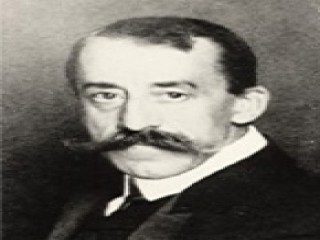
Henry Van De Velde biography
Date of birth : 1863-04-03
Date of death : 1957-10-27
Birthplace : Antwerp, Belgium
Nationality : Belgian
Category : Arhitecture and Engineering
Last modified : 2011-06-13
Credited as : Flemish painter, architect and interior designer,
Henry van de Velde was born on April 3, 1863, in Antwerp, the son of an apothecary. He studied painting at the Academy of Fine Arts there (1881-1884) and then with E. A. Carolus-Duran in Paris (1884-1885). In 1889 he joined a group of artists known as Les XX in Brussels and, with the publication of his lecture Deblaiement d'art (1894), emerged as the group's spokesman.
Influenced by the theories of William Morris and the English Arts and Crafts movement, Van de Velde abandoned painting and turned his attention to architecture and the applied arts. The building of his own house, Bloemenwerf, at Uccle near Brussels (1895) marked the beginning of his new career. For this house he designed all the furniture and appointments.
Van de Velde moved to Germany in 1900. He built the School of Applied Arts in Weimar (1904-1906), the predecessor of the Bauhaus, and was its director until World War I. He designed the Theater Building (1914; destroyed) at the exhibition of the Werkbund, or German association of architects and designers, held at Cologne. Throughout this period he was also busy designing a wide variety of useful objects, from book bindings to earrings, dresses, ceramics, tableware, and furniture, all in the curvilinear forms of Art Nouveau, and theorizing about the role of the applied arts in a series of publications such as Die Renaissance im modernen Kunstgewerbe (1901), Kunstgewerbliche Laienpredigten (1902), and Der neue Stil (1907).
From 1917 on Van de Velde lived in Belgium, Holland, and Switzerland. From 1926 to 1936 he was the director of the Institute Superieur des Arts Decoratifs in Brussels and professor of architecture at the University of Ghent, for which he designed the library (1936). Other important commissions from this period include the Kroler-Muller Museum at Otterlo, Netherlands (1937-1953), and the Belgian pavilions for the World's Fair in Paris (1937) and in New York (1939). He spent the last decade of his life in retirement at Oberägeri, Switzerland, where he wrote his memoirs. He died in Zurich on Oct. 27, 1957.
Van de Velde's memoirs were published in German in 1962. None of his writings has been translated. The basic studies of his life and work are in French and German. The only extensive discussion of his work in English is found in the error-riddled chapters devoted to him in Henry F. Lenning, The Art Nouveau (1951). His contribution to the development of 20th-century design is discussed in Nikolaus Pevsner, Pioneers of Modern Design (1936; rev. ed. 1960), and Peter Selz and Mildred Constantine, eds., Art Nouveau (1959).
















